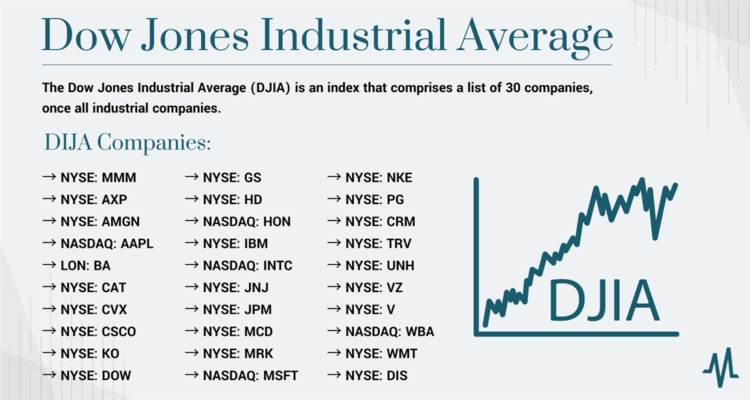
How to do stock trading? It’s a question that’s been on the minds of many, especially with the rise of online platforms and the increasing popularity of investing. But navigating the world of stocks can feel overwhelming, with terms like “bull market” and “short selling” sounding like a foreign language. Don’t worry, you’re not alone! This guide will walk you through the basics of stock trading, from understanding the market to placing your first order.
Whether you’re looking to diversify your portfolio, build wealth over the long term, or simply test the waters of the stock market, this guide will equip you with the knowledge and tools you need to get started. We’ll explore different trading strategies, discuss the importance of research and analysis, and provide practical tips for navigating the ups and downs of the market.
Understanding the Basics
Before diving into the world of stock trading, it’s crucial to grasp the fundamental concepts that govern this dynamic market. This section will cover the different types of stock markets, their functions, and the factors that influence stock prices. We’ll also explore key terms and concepts that are essential for understanding how stock trading works.
Types of Stock Markets
Stock markets are platforms where investors buy and sell shares of publicly traded companies. Different types of stock markets exist, each serving specific purposes and catering to different investor needs.
- New York Stock Exchange (NYSE): The NYSE is the world’s largest stock exchange by market capitalization. It’s known for its traditional trading floor where brokers physically execute trades. The NYSE primarily lists large, established companies.
- Nasdaq Stock Market: Nasdaq is a global electronic marketplace for stocks, options, and futures. It’s known for its focus on technology companies and its fully electronic trading system.
- Over-the-Counter (OTC) Market: The OTC market is a decentralized marketplace where securities not listed on major exchanges are traded. It’s known for its flexibility and accessibility to smaller companies.
Stock Market Indices
Stock market indices provide a snapshot of the overall performance of a specific sector or the entire market. They are calculated using a formula that tracks the prices of a basket of selected stocks.
- Dow Jones Industrial Average (DJIA): The DJIA tracks the performance of 30 large, publicly owned companies in the United States. It’s a widely followed index that provides a general sense of the overall market direction.
- S&P 500: The S&P 500 is a broader index that tracks the performance of 500 large-cap U.S. companies. It’s considered a more comprehensive indicator of the U.S. stock market.
- Nasdaq Composite: The Nasdaq Composite tracks the performance of all stocks listed on the Nasdaq Stock Market. It’s heavily influenced by the performance of technology companies.
Stock Price Determination
Stock prices are determined by the forces of supply and demand. When more buyers are interested in a stock than sellers, the price will rise. Conversely, when more sellers are willing to sell than buyers, the price will fall.
Stock Price = Supply and Demand
Several factors can influence stock prices, including:
- Company performance: Strong earnings, revenue growth, and positive market sentiment can drive stock prices up.
- Economic conditions: Interest rates, inflation, and overall economic growth can affect investor confidence and stock prices.
- Industry trends: Technological advancements, regulatory changes, and industry-specific factors can impact stock prices.
- News and events: Major news events, such as product launches, mergers, or acquisitions, can significantly affect stock prices.
Key Terms and Concepts
Understanding the following terms and concepts is essential for navigating the stock market:
- Shares: Shares represent ownership in a company. Each share gives the holder a portion of the company’s profits and voting rights.
- Dividends: Dividends are payments made by companies to their shareholders, usually in the form of cash or stock. They represent a share of the company’s profits.
- Market Capitalization: Market capitalization (market cap) is the total value of a company’s outstanding shares. It’s calculated by multiplying the stock price by the number of outstanding shares.
Choosing a Broker and Account: How To Do Stock Trading

Alright, so you’ve gotten a handle on the basics of investing, and now you’re ready to take the plunge. The next step is finding a broker, which is basically your middleman between you and the stock market. They’ll help you buy and sell stocks, provide you with tools to research companies, and manage your money. But with so many brokers out there, how do you choose the right one? Let’s break it down.
Types of Brokerage Accounts
Different brokers offer different types of accounts to suit your needs. Here are a few common types:
- Individual Accounts: This is the most basic type of account, and it’s perfect for individual investors who want to manage their own investments. You’ll be the sole owner of the account and responsible for all investment decisions.
- Joint Accounts: This type of account allows two or more people to share ownership and control of the account. It’s a great option for couples or families who want to invest together.
- Retirement Accounts: These accounts are designed to help you save for retirement. There are a few different types of retirement accounts, including Traditional IRAs, Roth IRAs, and 401(k)s. Each type has its own tax benefits and rules.
Key Factors to Consider When Choosing a Broker, How to do stock trading
When choosing a broker, it’s important to consider a few key factors:
- Fees: Brokers charge different fees for trading, account maintenance, and other services. Some brokers offer commission-free trading, while others charge a flat fee per trade. It’s important to compare fees across different brokers to find the best deal.
- Trading Platform: The trading platform is the software you’ll use to buy and sell stocks. You want a platform that’s easy to use and has the features you need. Look for things like real-time quotes, charting tools, and order types.
- Research Tools: A good broker will provide you with research tools to help you make informed investment decisions. These tools might include analyst reports, company news, and financial data.
- Customer Support: You’ll want to make sure the broker has good customer support in case you have questions or need help with your account. Look for brokers that offer phone, email, and chat support.
Opening a Brokerage Account
Opening a brokerage account is usually pretty straightforward. Here’s a general guide:
- Choose a Broker: Start by comparing brokers based on the factors we discussed earlier.
- Gather Your Information: You’ll need some basic information to open an account, such as your Social Security number, address, and date of birth.
- Complete the Application: You’ll need to fill out an application and provide some personal and financial information. You may also need to answer some questions about your investment experience and goals.
- Fund Your Account: Once your account is approved, you’ll need to fund it with money. You can do this by linking your bank account or using a credit card.
- Start Trading: Once your account is funded, you’re ready to start trading! Use the broker’s platform to buy and sell stocks.
Research and Analysis

Before you jump into buying and selling stocks, you need to do your homework. Research and analysis are the cornerstones of successful stock trading, helping you make informed decisions and manage risk. This section will cover fundamental analysis, technical analysis, and the importance of staying informed about market news and events.
Fundamental Analysis
Fundamental analysis digs into the underlying financial health and future prospects of a company. It’s about evaluating the company’s financials, industry trends, and management quality to determine its intrinsic value.
- Company Financials: Analyzing a company’s financial statements, such as the income statement, balance sheet, and cash flow statement, provides insights into its profitability, solvency, and cash flow generation. Key metrics to consider include revenue growth, profit margins, debt levels, and return on equity.
- Industry Trends: Understanding the industry in which a company operates is crucial. Factors such as industry growth prospects, competition, and regulatory changes can significantly impact a company’s performance. Researching industry trends helps you identify potential opportunities and risks.
- Management Quality: A strong management team is essential for a company’s success. Evaluating management’s track record, experience, and strategic vision can help assess their ability to navigate challenges and create value for shareholders.
Technical Analysis
Technical analysis focuses on studying past price and volume data to identify patterns and trends that may predict future price movements. It’s about reading the language of the market.
- Identifying Patterns: Technical analysts look for recurring patterns in price charts, such as head and shoulders, double tops, and triangles, which can signal potential reversals or continuations of trends.
- Using Indicators: Technical indicators, such as moving averages, relative strength index (RSI), and MACD, provide insights into price momentum, overbought/oversold conditions, and potential trend changes.
- Understanding Chart Formations: Chart formations, such as support and resistance levels, breakout patterns, and trend lines, can help identify potential buying and selling opportunities.
News and Events
Market news and events can significantly impact stock prices. Staying informed about economic data releases, company announcements, and geopolitical events is crucial for making informed trading decisions.
- Economic Data Releases: Key economic indicators, such as inflation, unemployment, and GDP growth, can influence investor sentiment and market direction.
- Company Announcements: Earnings reports, product launches, mergers and acquisitions, and regulatory changes can have a significant impact on a company’s stock price.
- Geopolitical Events: Global events, such as wars, elections, and trade disputes, can create volatility in the market and affect stock prices.
Risk Management
Risk management is an integral part of stock trading. It’s about protecting your capital and minimizing potential losses.
- Diversification: Spreading your investments across different asset classes, sectors, and companies helps reduce risk by mitigating the impact of any single investment’s poor performance.
- Stop-Loss Orders: Stop-loss orders automatically sell your shares when they reach a predetermined price, limiting potential losses.
- Position Sizing: Determining the appropriate amount of capital to allocate to each trade helps control risk and prevent excessive losses.
- Emotional Discipline: It’s essential to avoid impulsive trading decisions driven by fear or greed. Sticking to your trading plan and managing emotions helps mitigate risk.
Placing Orders and Executing Trades

Now that you understand the basics of stock trading and have chosen a broker and account, it’s time to dive into the exciting world of placing orders and executing trades. This is where the rubber meets the road, and you’ll be putting your research and analysis to the test. Let’s explore the different types of orders you can place, how to use a trading platform, and some important considerations for managing your trades.
Understanding Different Order Types
The type of order you place will determine how your trade is executed. There are several common order types, each with its own advantages and disadvantages. Here’s a breakdown:
| Order Type | Description | Advantages | Disadvantages |
|---|---|---|---|
| Market Order | An order to buy or sell a stock at the best available price immediately. | Fastest way to execute a trade. | You may not get the desired price, especially in volatile markets. |
| Limit Order | An order to buy or sell a stock at a specific price or better. | Allows you to control the price you pay or receive. | Your order may not be executed if the price doesn’t reach your limit. |
| Stop-Loss Order | An order to sell a stock if its price falls below a certain level. | Helps to limit potential losses. | May trigger a sale at an undesirable price if the market moves quickly. |
Placing Orders Using a Trading Platform
Trading platforms are the tools you’ll use to place and manage your orders. Most brokers offer user-friendly platforms with various features. To place an order, you’ll typically need to follow these steps:
1. Select the stock: Choose the stock you want to trade.
2. Specify the order type: Select the type of order (market, limit, stop-loss, etc.).
3. Enter the quantity: Indicate the number of shares you want to buy or sell.
4. Set the price (if applicable): For limit and stop-loss orders, enter the desired price.
5. Review and confirm: Double-check your order details and submit it.
Margin Trading: Leveraging Your Investments
Margin trading allows you to borrow money from your broker to increase your purchasing power. This can amplify both your potential profits and losses.
Margin trading can be a powerful tool for experienced traders, but it comes with significant risks.
Here are some key considerations:
* Increased risk: Margin trading increases your leverage, meaning you can lose more than your initial investment if the market moves against you.
* Interest charges: You’ll need to pay interest on the borrowed funds.
* Margin calls: If your account value falls below a certain level, your broker may require you to deposit additional funds.
Managing Your Trading Positions
Once you’ve placed an order, it’s important to actively manage your trading positions. This involves monitoring market conditions, adjusting your strategy as needed, and considering your risk tolerance. Here are some tips:
* Set stop-loss orders: This can help to limit your losses if the market turns against you.
* Review your positions regularly: Monitor your trades and adjust your strategy based on market changes.
* Don’t chase losses: If a trade is not going your way, don’t try to recover your losses by making additional trades.
* Stay disciplined: Stick to your trading plan and avoid emotional decisions.
Trading Strategies and Approaches
Choosing the right trading strategy is crucial for success in the stock market. Different strategies cater to different risk tolerances, time commitments, and investment goals. Understanding the key differences and the advantages and disadvantages of each strategy can help you determine which one best suits your needs and preferences.
Day Trading
Day trading involves buying and selling stocks within the same trading day, aiming to profit from short-term price fluctuations. Day traders rely heavily on technical analysis, using charts and indicators to identify trading opportunities. They often employ high leverage, which can amplify both profits and losses.
Benefits of Day Trading
- Potential for high returns: Day trading can generate significant profits in a short period, especially during volatile market conditions.
- Flexibility: Day traders can adjust their trading activity based on market conditions and their own schedule.
- Control: Day traders have complete control over their trades, entering and exiting positions at their discretion.
Drawbacks of Day Trading
- High risk: Day trading is a high-risk activity due to the use of leverage and the constant need to make quick decisions.
- Time-consuming: Day trading requires significant time and dedication to monitor market movements and execute trades.
- Stressful: The fast-paced nature of day trading can be mentally taxing and stressful.
Day Trading Setups and Entry/Exit Points
Day traders often look for patterns in price charts, such as breakouts, pullbacks, and support and resistance levels. They may use technical indicators to confirm their trading decisions.
For example, a day trader might enter a long position when a stock breaks above a key resistance level, supported by positive volume and momentum indicators. They might set a stop-loss order below the entry price to limit potential losses and a profit target above the resistance level.
Swing Trading
Swing trading involves holding stocks for a few days to a few weeks, aiming to capture price swings or trends. Swing traders typically use a combination of technical and fundamental analysis to identify trading opportunities.
Benefits of Swing Trading
- Lower risk than day trading: Swing trading involves holding positions for longer periods, reducing the risk of short-term market fluctuations.
- Less time-intensive: Swing traders do not need to monitor the market constantly, allowing for more flexibility in their schedule.
- Potential for higher returns than long-term investing: Swing trading can generate higher returns than long-term investing, as it captures price swings.
Drawbacks of Swing Trading
- Lower returns than day trading: Swing trading generally produces lower returns than day trading, as it focuses on longer-term trends.
- Requires a good understanding of market trends: Swing trading requires the ability to identify and interpret market trends, which can be challenging.
- Potential for losses: While lower than day trading, swing trading still carries the risk of losses, especially during market downturns.
Swing Trading Setups and Entry/Exit Points
Swing traders often look for stocks that are showing signs of breaking out of consolidation patterns or experiencing strong momentum. They may use technical indicators to confirm their trading decisions.
For example, a swing trader might enter a long position when a stock breaks above a resistance level, supported by positive volume and momentum indicators. They might set a stop-loss order below the entry price to limit potential losses and a profit target based on a predetermined price target or technical indicator.
Long-Term Investing
Long-term investing involves holding stocks for several years or even decades, aiming to benefit from the long-term growth of companies and the overall market. Long-term investors typically focus on fundamental analysis, evaluating the financial health and growth potential of companies.
Benefits of Long-Term Investing
- Lower risk: Long-term investing reduces the impact of short-term market fluctuations, as it focuses on the long-term growth potential of companies.
- Less time-intensive: Long-term investors do not need to monitor the market constantly, allowing for more flexibility in their schedule.
- Potential for significant returns: Long-term investing can generate substantial returns over time, especially during periods of economic growth.
Drawbacks of Long-Term Investing
- Lower returns than other strategies: Long-term investing generally produces lower returns than day trading or swing trading, as it focuses on the long-term growth of companies.
- Requires patience: Long-term investing requires patience and the ability to weather market fluctuations without panicking.
- Potential for losses: While lower than other strategies, long-term investing still carries the risk of losses, especially during periods of economic recession.
Long-Term Investing Setups and Entry/Exit Points
Long-term investors often look for companies with strong fundamentals, such as a history of profitability, consistent revenue growth, and a strong balance sheet. They may also consider factors such as industry trends, competitive landscape, and management quality.
For example, a long-term investor might buy shares of a company with a strong track record of earnings growth, a dominant market position, and a solid balance sheet. They might set a stop-loss order below the entry price to limit potential losses and a profit target based on a long-term price target or valuation multiple.
Monitoring and Evaluating Performance
It’s not enough to just place trades and hope for the best. To be a successful trader, you need to track your performance and learn from your mistakes. Monitoring and evaluating your trading performance is crucial for identifying areas for improvement, optimizing your strategy, and staying motivated.
Key Performance Metrics
Tracking key performance metrics provides valuable insights into your trading effectiveness. These metrics help you understand your strengths and weaknesses, enabling you to refine your approach and make informed decisions.
- Win Rate: This metric represents the percentage of your trades that result in profits. A higher win rate indicates greater accuracy in identifying profitable opportunities. For example, a win rate of 60% means that 6 out of every 10 trades you make are profitable.
- Average Profit/Loss: This metric calculates the average profit or loss per trade. It helps you understand the magnitude of your gains and losses. A positive average profit indicates a profitable trading strategy, while a negative average loss suggests a strategy that needs improvement.
- Risk-Reward Ratio: This ratio measures the potential profit relative to the potential loss on each trade. It helps you assess the balance between risk and reward in your trading decisions. A higher risk-reward ratio indicates a greater potential for profit for a given amount of risk. For instance, a risk-reward ratio of 1:2 means that for every dollar you risk, you aim to make two dollars in profit.
Maintaining a Trading Journal
A trading journal is an essential tool for tracking your trading activity, analyzing your performance, and identifying areas for improvement. It serves as a comprehensive record of your trades, allowing you to review your decisions and learn from both successes and failures.
- Trade Entries: Record the date, time, ticker symbol, entry price, exit price, profit/loss, and the rationale behind each trade. This detailed information provides a clear picture of your trading decisions and their outcomes.
- Market Conditions: Note the prevailing market conditions, such as trends, volatility, and news events, that influenced your trading decisions. Understanding the context of your trades helps you identify patterns and make better decisions in the future.
- Emotional State: Record your emotional state before, during, and after each trade. This helps you identify any emotional biases that may have affected your trading decisions. Recognizing these biases allows you to develop strategies for mitigating their impact.
- Analysis and Reflection: Regularly review your trading journal to analyze your performance and identify areas for improvement. Analyze your winning trades to understand what worked well and replicate those strategies. Similarly, examine your losing trades to identify patterns and avoid repeating mistakes.
Adjusting Your Strategy
Your trading strategy should be dynamic and adaptable to changing market conditions and your own performance. Regularly evaluating your trading results and market feedback allows you to adjust your strategy and improve your overall performance.
- Market Feedback: Pay attention to market trends, news events, and other factors that may influence your trading decisions. Adjust your strategy based on the evolving market landscape to remain competitive.
- Performance Analysis: Analyze your trading results, focusing on your win rate, average profit/loss, and risk-reward ratio. Identify areas where you excel and areas where you need improvement.
- Strategy Modifications: Based on your performance analysis and market feedback, adjust your trading strategy to optimize your results. This may involve changing your entry and exit points, modifying your risk management approach, or experimenting with new trading techniques.
Staying Motivated and Learning
Trading can be a challenging and emotionally demanding endeavor. It’s essential to stay motivated and learn from both your successes and failures.
- Focus on the Long Term: Trading is a marathon, not a sprint. Don’t get discouraged by short-term losses or fluctuations in the market. Focus on your long-term goals and maintain a consistent approach.
- Embrace Failure as a Learning Opportunity: Losing trades are inevitable. Instead of dwelling on losses, view them as valuable learning experiences. Analyze your mistakes and identify areas for improvement.
- Celebrate Successes: Acknowledge and celebrate your successes, no matter how small. This helps you stay motivated and reinforces your positive trading habits.
Final Thoughts
Stock trading can be an exciting and rewarding experience, but it’s important to remember that it also involves risk. By understanding the basics, conducting thorough research, and developing a sound trading strategy, you can increase your chances of success. Remember, patience, discipline, and a willingness to learn are essential ingredients for any successful investor. So, dive in, explore the world of stock trading, and start building your own investment journey.
FAQ
What is the minimum amount I need to start stock trading?
There’s no set minimum amount, but many brokers have low account opening requirements, often around $0 or a few hundred dollars. It’s best to start small and gradually increase your investments as you gain experience and confidence.
How do I choose a stock to invest in?
This depends on your investment goals and risk tolerance. Consider factors like company performance, industry trends, and your personal financial situation. Researching thoroughly and understanding the company’s fundamentals is crucial.
What are the risks associated with stock trading?
Stock trading involves inherent risks, including the potential for losing money. Market volatility, economic downturns, and company-specific events can all impact stock prices. It’s important to diversify your portfolio and manage your risk effectively.
How do I learn more about stock trading?
There are numerous resources available, including online courses, books, and articles. You can also join investment communities and forums to connect with other traders and learn from their experiences.





